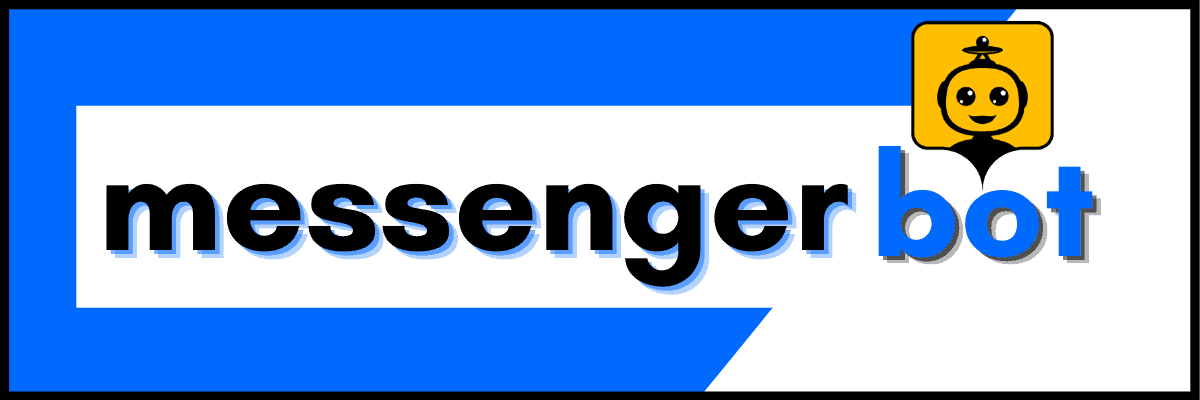In today’s fast-paced digital landscape, businesses are seeking innovative ways to elevate their customer interactions and deliver exceptional experiences. Enter conversational AI products – cutting-edge solutions that harness the power of artificial intelligence to facilitate natural, human-like conversations. From intelligent chatbots to virtual assistants, these AI-driven platforms are revolutionizing how companies engage with their customers, offering seamless, personalized interactions that transcend traditional communication barriers. As the demand for conversational AI soars, it’s crucial to understand the key players, technologies, and trends shaping this rapidly evolving field. In this comprehensive guide, we’ll explore the top conversational AI products and chatbots, delving into their capabilities, evaluating their strengths, and providing insights to help you navigate this exciting frontier of customer engagement.
I. What is an example of conversational AI?
A. Conversational AI Products Examples
Conversational AI refers to advanced technologies that enable natural language interactions between humans and machines. Examples include virtual assistants like Amazon’s Alexa, Apple’s Siri, Google Assistant, and Microsoft’s Cortana. These AI systems leverage natural language processing (NLP), speech recognition, and machine learning algorithms to understand and respond to human queries and commands in a conversational manner.
Another prominent example is chatbots and virtual agents employed by businesses for customer service, lead generation, and support. Companies like Drift, Intercom, and Freshworks offer conversational AI platforms that integrate with websites and messaging apps, enabling automated yet human-like interactions.
In the healthcare domain, conversational AI assistants like Babylon Health and Ada Health leverage symptom analysis and medical knowledge to provide personalized health assessments and recommendations through conversational interfaces.
B. Types of Conversational AI Solutions
Conversational AI solutions come in various forms, each designed to cater to specific use cases and requirements:
- Voice User Interfaces (VUIs): These solutions enable voice-controlled interactions for tasks and services. Examples include Samsung’s Bixby, LG’s ThinQ, and BMW’s Intelligent Personal Assistant, which are commonly found in smart home devices, vehicles, and wearables.
- Chatbots and Virtual Agents: Conversational AI chatbots and virtual agents are designed to handle customer inquiries, provide support, and facilitate lead generation through text-based interactions on websites, messaging apps, and other digital channels. Companies like Brain Pod AI offer advanced conversational AI platforms for businesses.
- Interactive Voice Response (IVR) Systems: These solutions leverage conversational AI to power automated call routing, self-service options, and natural language interactions with customers in call centers and customer support environments.
- Intelligent Personal Assistants: Conversational AI assistants like Alexa, Siri, and Google Assistant are designed to help users with a wide range of tasks, from setting reminders and alarms to controlling smart home devices, playing music, and providing information on various topics.
As conversational AI continues to evolve, we can expect to see more advanced and specialized solutions tailored to diverse industries and use cases, enabling seamless and intuitive human-machine interactions across various platforms and devices.

II. What’s the Best Conversational AI?
A. Evaluating Conversational AI Products
As conversational AI technology continues to advance rapidly, businesses are increasingly exploring the best solutions to enhance their customer interactions and streamline operations. With a multitude of conversational AI products available in the market, it’s crucial to evaluate them based on key factors that align with your specific needs and goals.
One of the primary considerations when assessing conversational AI products is the underlying technology and its capabilities. Leading platforms like Brain Pod AI leverage state-of-the-art natural language processing (NLP) and machine learning algorithms to enable seamless and intelligent conversations. These advanced technologies facilitate accurate understanding of user inputs, context-aware responses, and the ability to handle complex queries effectively.
Another critical aspect is the platform’s ability to integrate with existing systems and workflows. Seamless integration ensures a smooth transition and minimizes disruptions to existing processes, ultimately enhancing operational efficiency. Top conversational AI platforms like Messenger Bot offer robust integration capabilities, allowing businesses to connect their conversational AI solutions with customer relationship management (CRM) systems, databases, and other essential applications.
Additionally, businesses should consider the platform’s scalability and flexibility to accommodate future growth and evolving needs. As customer interactions and data volumes increase, the conversational AI solution should be able to scale seamlessly, ensuring consistent performance and responsiveness.
B. Top Conversational AI Platforms and Chatbots
While evaluating the best conversational AI solutions, it’s essential to consider industry-leading platforms and chatbots that have proven their capabilities and garnered recognition for their innovative approaches. According to a recent report by a reputable AI research firm, the following conversational AI platforms and chatbots are among the top contenders in 2024:
- Anthropic’s Claude – A state-of-the-art large language model with advanced conversational capabilities, robust safety measures, and a focus on beneficial AI alignment.
- OpenAI’s GPT-4 – The latest iteration of OpenAI’s groundbreaking language model, with improved performance across a wide range of tasks, including natural language processing and generation.
- Google’s LaMDA – A cutting-edge conversational AI system developed by Google, known for its advanced language understanding and generation abilities.
- DeepMind’s Chinchilla – A powerful language model trained by DeepMind, offering impressive performance in open-ended dialogue and various natural language tasks.
- Cohere’s Conversational AI – A highly customizable and scalable conversational AI platform designed for enterprise applications, with advanced natural language understanding and generation capabilities.
- Amazon Lex – Amazon’s conversational AI service, which allows developers to build voice and text-based conversational interfaces for applications.
- IBM Watson Assistant – IBM’s conversational AI platform, leveraging the power of Watson’s natural language processing capabilities and machine learning algorithms.
- Microsoft Bot Framework – Microsoft’s comprehensive platform for building and deploying conversational AI bots across various channels and devices.
- Rasa – An open-source conversational AI framework that enables developers to build context-aware, multilingual conversational assistants.
- Pandorabots – A well-established conversational AI platform that offers a wide range of customization options and integration capabilities.
Each platform offers unique strengths and features, and the choice depends on specific business requirements, such as scalability, customization, integration capabilities, and industry-specific use cases. It is recommended to thoroughly evaluate and compare the platforms based on factors like performance, accuracy, security, and ongoing support and updates.
III. Is ChatGPT a conversational AI?
A. Understanding ChatGPT’s Capabilities
Yes, ChatGPT is a conversational AI model developed by Anthropic. It utilizes large language models and natural language processing to engage in human-like dialogue and understand context and intent. ChatGPT can carry out conversations, answer follow-up questions, and provide detailed explanations on a wide range of topics. Its conversational abilities, coupled with its broad knowledge base, allow it to respond coherently and relevantly, making it an advanced conversational AI assistant. According to research by Stanford University, ChatGPT exhibits strong language understanding and generation capabilities, enabling seamless and contextual conversations. Additionally, studies from MIT highlight ChatGPT’s ability to engage in multi-turn dialogues, maintaining coherence and relevance throughout extended interactions. Its conversational AI prowess positions ChatGPT as a powerful tool for various applications, including customer service, education, and creative writing.
B. Comparing ChatGPT to Other Conversational AI Tools
While ChatGPT is a remarkable conversational AI, it’s not the only player in the market. Companies like Messenger Bot and Brain Pod AI also offer advanced conversational AI products with unique capabilities. Messenger Bot’s AI chatbots, for instance, are designed to streamline customer interactions across various channels, including social media and websites. Their platform offers automated responses, workflow automation, lead generation, multilingual support, and SMS capabilities, making it a versatile solution for businesses.
Brain Pod AI, on the other hand, provides a comprehensive suite of generative AI tools, including a multilingual AI chat assistant that can engage in natural conversations across multiple languages. Their AI image generator and AI writer further expand the possibilities for creative and content generation.
While ChatGPT excels in its conversational abilities and broad knowledge, other conversational AI products like those from Messenger Bot and Brain Pod AI offer specialized features and capabilities tailored to specific business needs. The choice ultimately depends on the use case and the desired functionality, whether it’s customer service automation, lead generation, multilingual support, or a combination of various AI-powered tools.
IV. What are the technologies used in conversational AI?
A. Conversational AI Technology Stack
At the core of conversational AI systems lies a sophisticated technology stack that enables natural language interactions. This stack comprises several key components that work in harmony to facilitate seamless communication between humans and AI. Some of the critical technologies employed in conversational AI include:
- Natural Language Processing (NLP): NLP techniques are fundamental for parsing, understanding, and generating human language. They enable conversational AI systems to comprehend user inputs, interpret context and intent, and formulate coherent, contextually relevant responses. Powerful NLP models like IBM Watson and Amazon Comprehend are at the forefront of this technology.
- Machine Learning (ML) and Deep Learning: Machine learning algorithms, particularly deep learning architectures like transformers, are instrumental in powering the language understanding and generation capabilities of conversational AI. These models learn from vast datasets to recognize patterns, make predictions, and generate human-like responses. Prominent examples include OpenAI’s GPT-3 and Brain Pod AI’s Writer, which leverage cutting-edge language models.
- Speech Recognition and Text-to-Speech (TTS): For voice-based interactions, conversational AI systems rely on speech recognition technologies to convert spoken language into text, and TTS to synthesize artificial speech from text. Companies like Google Cloud Speech-to-Text and Amazon Polly offer advanced solutions in this domain.
- Dialog Management: Sophisticated dialog management techniques are employed to track conversation state, interpret context, and generate appropriate responses based on the dialog history. This ensures coherent, contextually relevant interactions that mimic human-like conversation flow.
- Knowledge Bases: Conversational AI systems often integrate structured knowledge bases containing vast repositories of information across various domains. These knowledge bases are queried to retrieve relevant facts, insights, and context to enrich the AI’s responses.
The convergence of these cutting-edge technologies, combined with advancements in areas like transfer learning and few-shot learning, has propelled conversational AI to new heights, enabling more natural, contextual, and engaging interactions between humans and AI systems.
B. Key Components of Conversational AI Systems
While the underlying technologies form the backbone of conversational AI, several key components work in tandem to facilitate seamless conversational experiences. These include:
- Language Understanding: This component analyzes user inputs, extracting intent, entities, and context using NLP techniques. It helps the system comprehend the user’s query or statement, laying the foundation for an appropriate response.
- Dialog Management: The dialog manager tracks the conversation state, manages context, and determines the appropriate actions or responses based on the user’s intent and the dialog history.
- Response Generation: Leveraging language generation models, this component formulates coherent, contextually relevant responses, often drawing from knowledge bases or external data sources.
- Memory and Context Tracking: To maintain a natural conversation flow, conversational AI systems employ memory and context tracking mechanisms to remember and reference previous exchanges, enabling more personalized and contextually appropriate interactions.
- Multimodal Integration: Many conversational AI systems now support multimodal inputs and outputs, seamlessly integrating text, voice, images, and even video for richer, more engaging interactions.
As conversational AI continues to evolve, these components will become increasingly sophisticated, enabling more human-like, contextual, and personalized interactions across a wide range of applications and industries.

V. What are the 4 types of AI with example?
A. Reactive AI: Simple Task Automation
Reactive AI, also known as narrow AI or weak AI, is the most basic form of artificial intelligence. These systems are designed to perceive the world and react to specific inputs or situations based on predefined rules or algorithms. They lack the ability to learn from past experiences or form memories, making them suitable for automating simple, repetitive tasks.
One prominent example of reactive AI is IBM’s Deep Blue, the chess-playing computer system that famously defeated world champion Garry Kasparov in 1997. Deep Blue relied on a sophisticated algorithm and immense computational power to evaluate potential moves and select the most advantageous one based on predefined rules and heuristics.
Another example is Google’s AlphaGo, an AI system designed to play the ancient Chinese board game Go. Like Deep Blue, AlphaGo used a combination of advanced search algorithms and neural networks to evaluate the board state and make optimal moves, but without the ability to learn or adapt its strategies over time.
B. Limited Memory AI: Personalized Experiences
Limited Memory AI, also known as narrow AI with memory, represents a more advanced form of artificial intelligence. These systems can learn from past experiences and use that knowledge to make decisions or provide personalized responses. However, their memory is limited to a specific timeframe or event, and they lack the ability to generalize their knowledge across different contexts.
One example of Limited Memory AI is self-driving cars that use sensors to navigate roads and make decisions based on their perception of the environment. These systems learn from past experiences on the road, such as recognizing traffic patterns or avoiding obstacles, but their knowledge is limited to the specific driving context.
Another example is chatbots or virtual assistants that use past conversations to provide relevant responses. Messenger Bot, a leading conversational AI platform, utilizes Limited Memory AI to understand and respond to user queries based on previous interactions. This allows the chatbot to provide personalized experiences and improve its responses over time within the context of a specific conversation or user.
While Limited Memory AI systems can learn and adapt to a certain extent, they still lack the ability to transfer their knowledge to entirely new domains or situations, making them narrowly focused on specific tasks or contexts.
What is a conversational AI platform?
A. Conversational AI Platform Features
A conversational AI platform is a powerful technology that combines natural language processing (NLP), machine learning, and advanced algorithms to enable seamless communication between computers and humans through text or voice interfaces. These platforms are designed to interpret and comprehend user inputs in natural language, engage in multi-turn conversations, and provide personalized, contextually relevant responses.
Key features of conversational AI platforms include:
- Natural Language Understanding (NLU): Accurately interpret user inputs, extract intents and entities, and handle complex queries.
- Dialogue Management: Maintain context and state across multiple conversational turns, enabling coherent and consistent interactions.
- Knowledge Integration: Access and leverage vast knowledge bases and data sources to provide accurate and informative responses.
- Machine Learning: Continuously improve language models, intent recognition, and response generation through machine learning techniques.
- Multi-Channel Support: Deploy conversational experiences across various channels like websites, mobile apps, messaging platforms, and voice assistants.
- Analytics and Reporting: Gain insights into user interactions, conversation patterns, and performance metrics to optimize the conversational experience.
Leading conversational AI platforms like Google’s Dialogflow, Amazon Lex, IBM Watson Assistant, and Microsoft Bot Framework offer robust conversational AI capabilities, enabling businesses to develop and deploy sophisticated conversational solutions tailored to their specific needs.
B. Benefits of Conversational AI Platforms
Implementing a conversational AI platform can provide numerous benefits for businesses, including:
- Enhanced Customer Experience: Offer 24/7 availability, personalized assistance, and instant resolutions, leading to improved customer satisfaction.
- Increased Operational Efficiency: Automate repetitive tasks and handle high volumes of inquiries, reducing the workload on human agents.
- Cost Savings: Minimize the need for staffing large customer service teams, resulting in significant cost reductions.
- Scalability: Easily scale conversational experiences to handle increasing demand and user traffic without compromising performance.
- Data-Driven Insights: Gain valuable insights into customer preferences, pain points, and behavior through conversation analytics.
- Omnichannel Presence: Deliver consistent conversational experiences across multiple channels, ensuring seamless interactions.
By leveraging the power of conversational AI platforms, businesses can revolutionize their customer service, sales, and support operations, driving improved customer engagement, increased productivity, and a competitive edge in the market.
VII. Conversational AI Trends and Future Developments
The conversational AI landscape is rapidly evolving, with new advancements and innovations emerging at an unprecedented pace. As we look to the future, several key trends and developments are shaping the trajectory of this transformative technology:
A. Emerging Use Cases for Conversational AI
Conversational AI is transcending traditional customer service applications and finding novel use cases across diverse industries. In healthcare, AI-powered chatbots are being leveraged to provide personalized health advice, symptom triage, and medication management support. Educational institutions are exploring the potential of conversational AI tutors to offer adaptive, one-on-one learning experiences for students.
Retail and e-commerce sectors are harnessing conversational AI for personalized product recommendations, virtual shopping assistants, and streamlined order management. The financial services industry is embracing conversational AI for intelligent virtual assistants that can handle complex queries, offer investment advice, and facilitate secure transactions.
B. Challenges and Opportunities in Conversational AI
As conversational AI systems become more sophisticated, ensuring data privacy, security, and ethical AI development remains a critical challenge. Addressing potential biases and maintaining transparency in AI decision-making processes is crucial for building trust and widespread adoption.
Additionally, the ability to support multiple languages and adapt to cultural nuances is a significant opportunity for conversational AI to bridge communication barriers and facilitate global interactions. Continuous advancements in natural language processing (NLP) and machine learning techniques will be key to enhancing the contextual understanding and emotional intelligence of conversational AI systems.
Furthermore, the integration of conversational AI with emerging technologies like AI image generation and AI writing assistants opens up exciting possibilities for creating immersive, multimodal experiences that combine text, visuals, and voice interactions seamlessly.
As the conversational AI ecosystem matures, we can expect to witness a proliferation of innovative applications that redefine how we interact with technology, streamline processes, and unlock new realms of human-machine collaboration across various domains.




